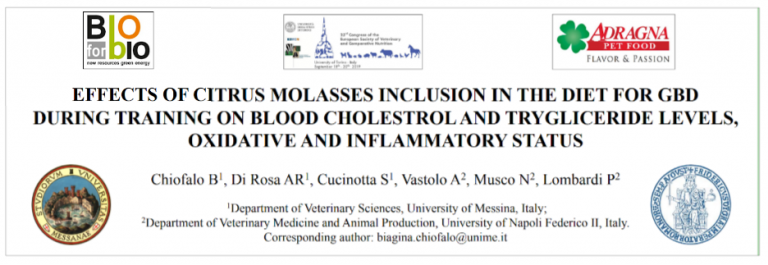Some studies carried out at theUniversity of Messina have proven how citrus are important in petfood. In fact, they have healthy effects in regulating blood cholesterol levels. Their important role has also been confirmed by some expert nutritionists with whom our Naxos range has been formulated. Naxos.
 All product of Naxos range contain citrus that are ideal for mono-protein diets. Their functional nutrients are the secret of their nutritional value: dietary fiber is at the top of the list. Citrus pulp can contain fibers five times higher than wheat bran. In this way, the supply of fibers is guaranteed without the use of a cereal, but also thanks to the properties of citrus.
All product of Naxos range contain citrus that are ideal for mono-protein diets. Their functional nutrients are the secret of their nutritional value: dietary fiber is at the top of the list. Citrus pulp can contain fibers five times higher than wheat bran. In this way, the supply of fibers is guaranteed without the use of a cereal, but also thanks to the properties of citrus.
Pectin is one of the most important elements of citrus in pet food. Pectin content present in citrus is equal to 2.5% -3.5% of the weight of the fruit pulp; in the peel, this percentage can reach up to 30% of the whole weight of citrus.
The unique properties of citrus
Orange is highly rich in antioxidants, carotenoids (Vit. A), bioflavonoids and vitamin C (ascorbic acid). Its pulp also contains some complex sugars, carotenoids such as β-carotene, small amounts of essential oils such as limonene and antioxidant flavonoids able to counteract premature aging.
All of these components have beneficial effects for our dogs. They are able to:
- regulate intestinal functions;
- increase consistency of faeces
- regulate intestinal transit and improve the absorption of various nutrients
- trapping of a portion of bile acids, capable of hindering their reabsorption;
- limit LDL cholesterol concentrations in the blood
Historical notes about citrus
As for the carob, other superfood of the Mediterranean and Sicilian tradition, the history of citrus fruits is very ancient and complex.
It is believed that the first edible citrus grew on the slopes of the Himalayas. Four thousand years ago, they were grown in China and appreciated in India. It was Alexander the Great the person who brought oranges and lemons to the Mediterranean countries where their plantation started later.
Lemons appeared in Italian markets in the 11th century. The Portuguese introduced oranges to Europe in the 15th century. Lime and grapefruit became also important later while mandarins came from China in 1805.
There are about 1600 species of citrus with very different fruits: in order to give an example, we can consider the smallest citrus, the Kumquat, and the biggest one, the pomelo. There are four large groups of citrus: oranges, lemons, grapefruits and mandarins. The Italian regions where citrus are prevalently produced are in the south with Sicily in the lead, followed by Calabria. There are also crops in Campania, Puglia, Basilicata and Sardinia.



